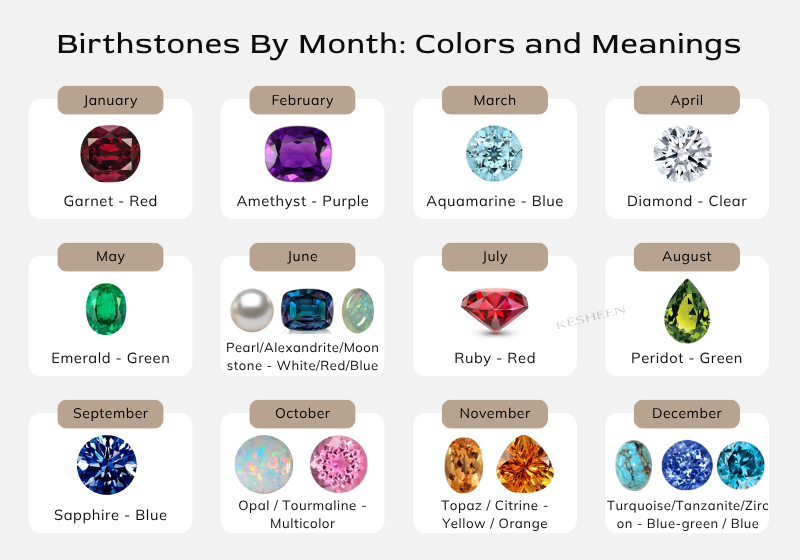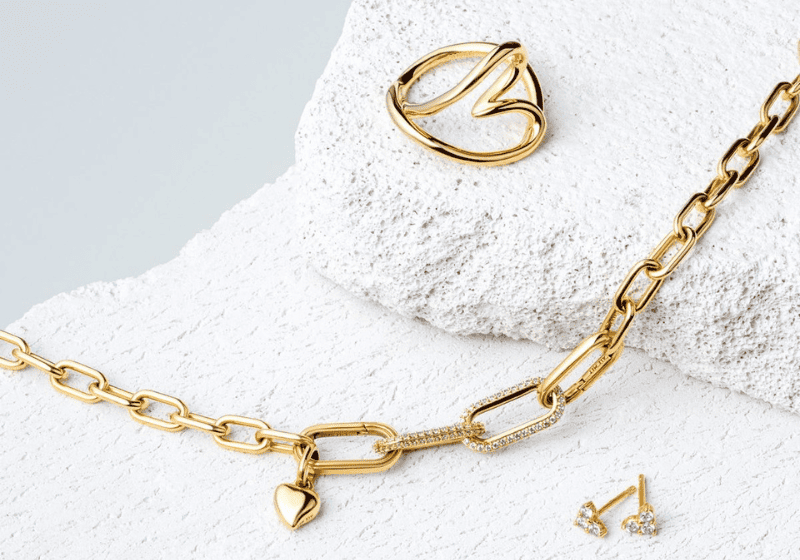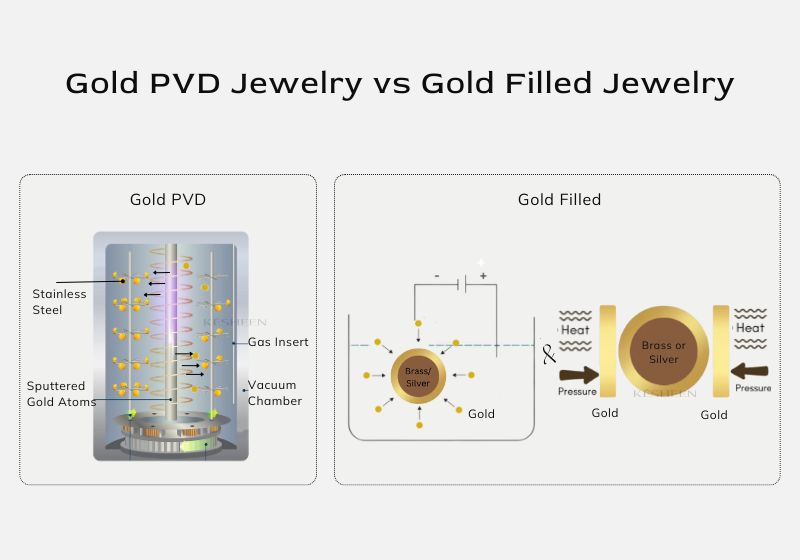For many jewelry lovers, gold filled jewelry is the best amongst other gold jewelry coatings (such as gold plating and gold vermeil). This is because it contains a higher percentage of real gold, which makes it very durable and retains its luster for a long time. However, gold filled is not suitable for stainless steel jewelry or PVD gold plated jewelry. It’s best applicable on brass or silver base metal.
In this article, we will explore gold filled jewelry meaning and how is gold filled jewelry made – mechanical vs chemical bonding.
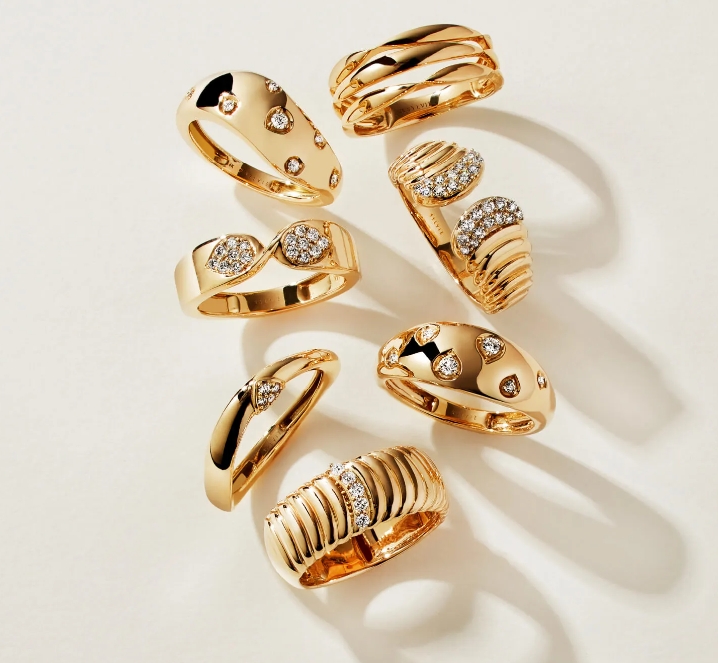
Source: SylvieJewelry
What is Gold Filled Jewelry?
Gold filled jewelry means a thick layer of gold that’s bonded to a base metal (usually brass or silver). It’s a viable option for people who want a version of solid gold jewelry but without the huge price tag.
What Does Gold Filled Jewelry Mean? – Gold Filled Standard
According to the US standard, the gold layer that is bonded to the base metal must make up at least 5% of the gold filled jewelry total weight. If it’s less than 5%, it cannot be called gold filled.
What Does 1/20 14k GF Mean?
1/20 14k GF is a common stamp that’s often seen in the inner linings of gold filled jewelry. It basically indicates the gold content in the jewelry—14-karat gold and 1/20 (5% gold) of the jewelry total weight.
How is Gold Filled Jewelry Made? – 2 Methods Explained
Explained below are how gold filled jewelry can be made:
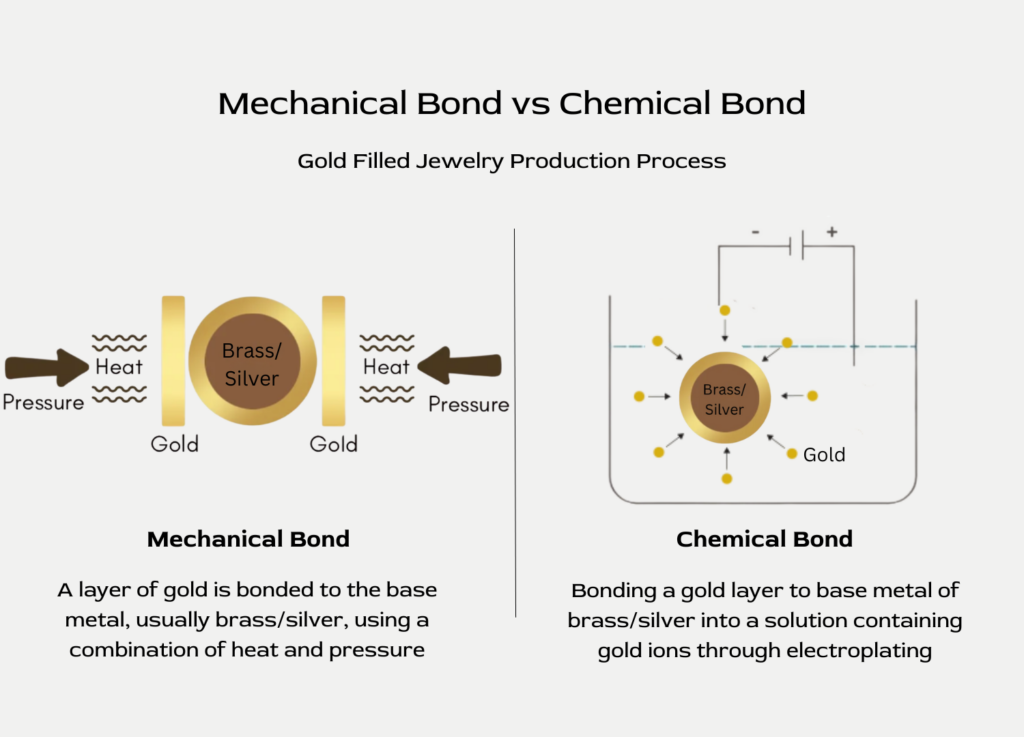
- Mechanical Bonding
This method basically involves bonding the gold layer to the base metal mechanically using a combination of heat and pressure. Because it’s a manual process, the gold layer is sometimes bonded to the base metal in bits to ensure tight adhesion. Before the bonding process, it’s essential that the base metal is thoroughly cleaned to make sure no particles stop the gold from sticking.
- Chemical Bonding
In this gold filled process, the layer of gold is bonded to the base metal via an electroplating procedure, which involves submerging the base metal into a solution that contains gold ions. Then, an electric current is passed through the solution, making the gold stick tightly to the base metal.
Mechanical Bond vs Chemical Bond: Which is Better in Jewelry Production?
Mechanical bond is the most commonly-used method. That leads to asking: is gold filled jewelry made through chemical bonding not good?
Let’s compare mechanical bond vs chemical bond by examining their pros and cons to know which is better.
Pros and Cons of Mechanical Bonding
Key Features
- Mechanical bonding is suitable for jewelry with simple shapes and those in large sizes.
- This bonding method is best suited for small quantity production, as it requires manual bonding of the gold.
Limitations
- Mechanical bonding is not ideal for jewelry with intricate designs because tight spots may not be fully covered.
- Requires longer lead time, hence not suitable for mass production.
- The gold bonded may not be uniform, leading to peeling of the gold layer over time.
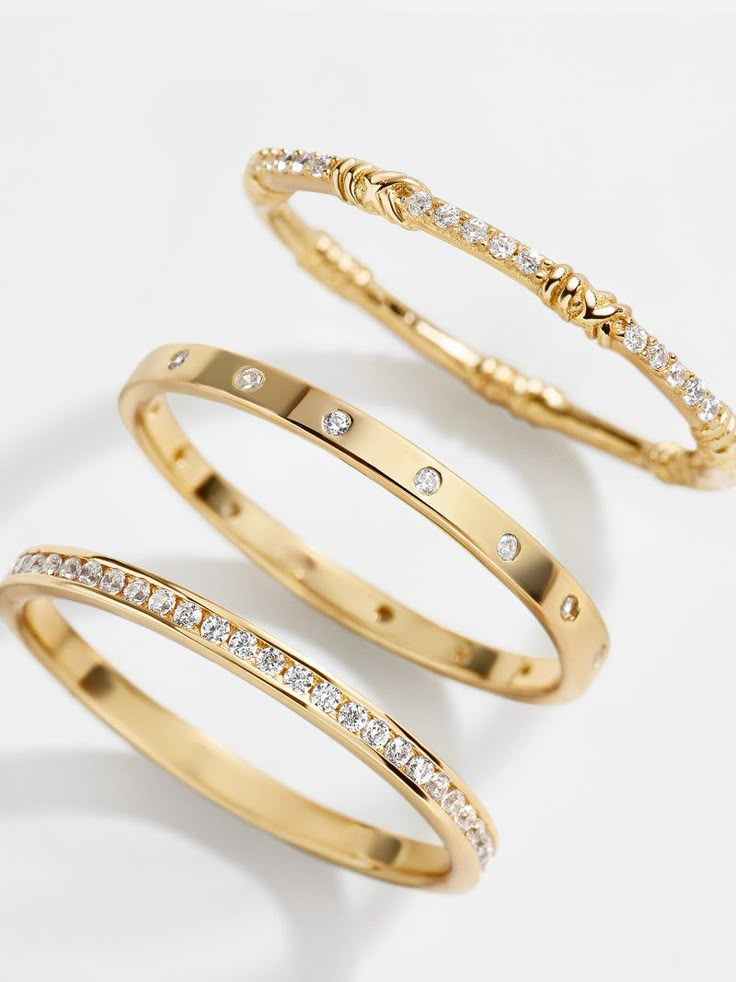
Source: Baublebar
Pros and Cons of Chemical Bonding
Advantages over Mechanical Bonding
- Offers better adhesion, making it a stand out procedure among jewelry manufacturing processes.
- Because it’s fully submerged into the gold ions solution, it offers consistent quality and higher efficiency, making it ideal for mass production.
- Used by the best custom jewelry manufacturer because it enables more design flexibility, even for pieces with intricate patterns and fine details.
Limitations
- Chemical bonding requires more expertise and strict process control.
FAQs
Is Gold Filled Jewelry Real Gold?
Gold filled jewelry is not entirely real gold. Rather, it’s made from a cheap base metal (brass or silver) and a layer of real gold.
Is Gold Filled Jewelry Good?
Yes, gold filled jewelry is very good. It resembles real gold and comes at a more affordable price.
How Long Does Gold Filled Jewelry Last?
It can last for 3-5 years, better than gold plated and gold vermeil jewelry.
Is gold bonded the same as gold filled?
It depends. It can be the same as gold filled if the gold layer is at least 5% of the entire weight of the piece. But other times some people may refer to heavy gold plating or gold plating with better adhesion. Always check the gold content for clarity.
Key Takeaway
All in all, chemical bonding is a better gold filled jewelry making process, as it offers a better bonding effect, consistent gold color, and it’s suitable for intricate jewelry & mass production. It’s crucial to note that neither mechanical nor chemical bonding is applicable to stainless steel or PVD coating jewelry, which is usually applied to brass and silver.

